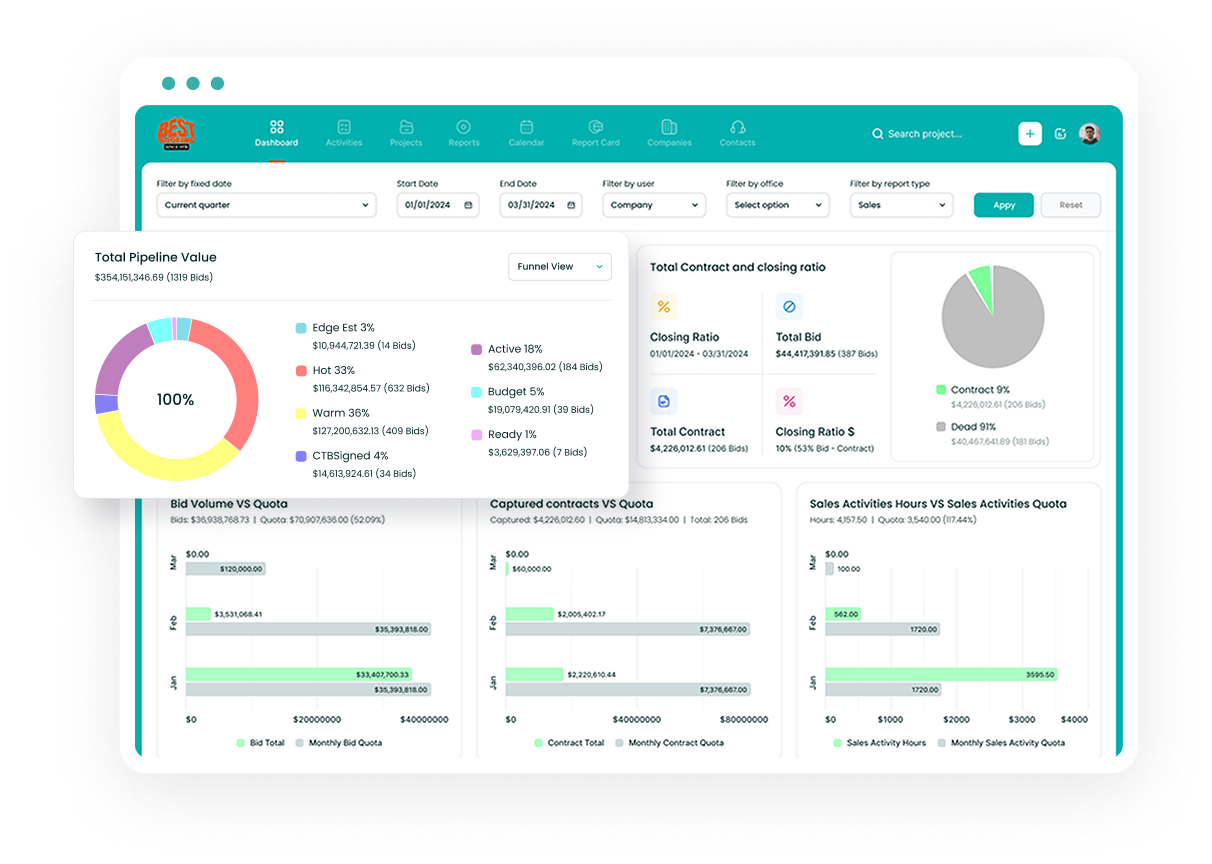How to Backup GL in Sage 100
Data loss can cripple your business operations, especially when relying on robust accounting systems like Sage 100. Whether you're dealing with unexpected system failures, data corruption, or other unforeseen circumstances, ensuring that your General Ledger (GL) and other critical financial data are securely backed up is paramount. This guide provides a step-by-step solution to effectively backup your GL in Sage 100, safeguarding your financial integrity and ensuring business continuity.
Why Backup Your Sage 100 GL Data
Data protection remains a critical priority for businesses using Sage 100. When your financial data faces unexpected system failures or corruption, having secure backups of your General Ledger ensures your business operations continue smoothly. Many organizations discover the importance of proper backups only after experiencing a significant data loss incident.
Financial data forms the core of your business decisions and reporting requirements. Regular backups protect your journal entries, accounts payable, accounts receivable, and other vital financial records. This protection becomes particularly crucial during period-end processing, tax season, and audit preparations.
Your backup strategy directly impacts your ability to maintain accurate financial records and generate reliable statements. A well-planned approach prevents disruptions to your regular accounting processes and provides peace of mind knowing your data remains secure and recoverable.
Essential Backup Methods in Sage 100
The Copy Company feature provides a straightforward approach to creating comprehensive backups of your financial data. This method proves particularly valuable before conducting year-end processing or implementing significant system modifications. The process involves creating a new company code and transferring all relevant module data to ensure complete data preservation.
Database Administration utilities offer automated scheduling capabilities that maintain regular backups of your financial information. These tools include verification processes that confirm the integrity of your backup files. The scheduling feature allows you to maintain current records without manual intervention.
Third-party backup tools often create incomplete or corrupted backups that may prove unusable during restoration. Sage 100 provides native backup capabilities specifically designed to maintain data integrity and ensure successful recovery when needed. These built-in tools understand the complex relationships between different data components.
Comprehensive Backup Components
A complete backup strategy encompasses multiple data types and locations within your Sage 100 environment. Your company data files contain specific financial records and configurations unique to your organization. These files require consistent backup procedures to maintain their integrity.
System data files store important configuration settings and parameters that control how your Sage 100 installation operates. Program files include the executable components necessary for running various Sage 100 modules. Additional data locations may contain Paperless Office PDFs and other business documents.
Storage considerations play a vital role in maintaining secure backups. Creating redundant copies across different storage media provides additional protection against data loss. Consider these storage options for your Sage 100 backups:
- Network-attached storage devices
- External hard drives
- Cloud storage solutions
- Removable media storage
- Dedicated backup servers
Pre-Backup Planning Process
Proper preparation ensures successful backup operations. A systematic approach helps prevent common issues that could compromise your backup integrity. Taking time to verify system conditions before starting reduces the risk of backup failures.
Users must log out of the system before initiating backups to prevent data inconsistencies. Storage space requirements deserve careful consideration, as insufficient space leads to incomplete or failed backups. Maintaining detailed documentation of your backup procedures helps ensure consistency and provides guidance during recovery situations.
Regular testing of backup destinations confirms proper access and permissions remain in place. System requirements may change over time, requiring periodic review to maintain optimal backup performance. Implementing these preparatory steps creates a reliable foundation for your backup strategy.
Your backup verification process should include these essential tasks:
- Verify all users have properly logged out of the system.
- Calculate required storage space based on current data volume.
- Test access permissions for backup destinations.
- Document each step of the backup procedure.
- Review system specifications against backup requirements.
Year-End Processing Guidelines
Year-end processing requires special attention to backup procedures. Financial data preservation becomes particularly critical during this period as you prepare to close accounting periods and generate annual reports. Creating comprehensive backups before initiating year-end processes protects against potential complications.
Module closing sequences impact data integrity during year-end processing. Following the correct order ensures proper data relationships remain intact throughout the closing procedure. Creating separate archive companies provides additional protection for historical data while maintaining access to previous records.
Data verification plays an essential role in year-end processing. Comparing totals across modules confirms accurate data transfer and identifies potential discrepancies. Testing random transactions validates data accessibility and integrity throughout the backup process.
These modules require specific attention during year-end closing:
- Accounts Payable and Receivable
- Inventory Management
- Purchase Order Processing
- Sales Order Processing
- Payroll and Time Management
- General Ledger
Recovery and Verification Steps
Successful data recovery depends on proper verification procedures. Running trial balances helps confirm data accuracy between live and backup companies. This verification process identifies potential issues before they impact your business operations.
Comparing module totals provides another layer of validation for your backup integrity. Random transaction testing confirms data accessibility and completeness. These tests help identify any missing or corrupted data before critical restoration needs arise.
Multiple backup copies stored in different locations protect against various disaster scenarios. Regular restoration testing validates your ability to recover from data loss situations. Maintaining detailed recovery procedures ensures quick response times during actual emergencies.
Your recovery plan should address these critical areas:
- Establish specific recovery time objectives for different scenarios.
- Create detailed procedures for various types of data loss.
- Maintain current contact information for technical support resources.
- Document step-by-step restoration procedures for each module.
- Schedule regular testing of recovery procedures.
Advanced Backup Strategies
Implementing automated backup schedules ensures consistent data protection. These schedules can accommodate your business hours and processing requirements while maintaining current backup copies. Regular automation reduces the risk of missed backups due to human oversight.
Integration with cloud storage solutions provides additional protection for your backup data. Cloud storage offers secure, off-site data preservation with flexible accessibility options. These solutions often include additional security features that protect your sensitive financial information.
Modern backup solutions provide compression and encryption capabilities that optimize storage usage while protecting data confidentiality. These features help manage storage costs while maintaining proper security protocols. Regular updates to your backup strategy ensure alignment with current business needs and technology capabilities.
Daily Backup Monitoring Tips
Regular monitoring ensures optimal performance of your backup processes. Daily checks help identify potential issues before they escalate into significant problems that could compromise your data security. Implementing systematic monitoring procedures creates a proactive approach to data protection.
System logs provide valuable insights into backup performance and potential issues. These logs contain detailed information about successful completions, warnings, and errors that require attention. Regular review of these logs helps maintain optimal backup operations and identifies patterns that might indicate developing problems.
Technical teams benefit from establishing specific monitoring criteria for backup operations. These criteria provide clear guidelines for evaluating backup performance and determining when intervention becomes necessary. Setting appropriate thresholds helps distinguish between normal variations and genuine concerns that require immediate attention.
Remote Access Security Measures
Remote access capabilities require additional security considerations for backup operations. Organizations increasingly need secure remote access to their backup systems while maintaining data protection standards. Implementing proper security measures prevents unauthorized access while ensuring legitimate users can perform necessary backup tasks.
Virtual Private Networks provide secure connections for remote backup management. Multi-factor authentication adds another layer of protection against unauthorized access attempts. Regular security audits help identify potential vulnerabilities in remote access configurations.
Remote monitoring tools must align with your organization's security policies. These tools require proper configuration to maintain data confidentiality while providing necessary access to backup systems. Security measures should adapt to changing threats without compromising backup functionality.
Your remote access security protocol should prioritize these critical areas:
- Encrypted connection requirements
- Access level restrictions
- Authentication methods
- Session timeout limits
- Activity logging standards
Customized Backup Schedules
Creating customized backup schedules accommodates specific business requirements. Different departments often need varying backup frequencies based on their data modification patterns. Understanding these patterns helps develop effective scheduling strategies that minimize system impact while maintaining data protection.
Scheduling optimization requires careful consideration of system resources and network capacity. Peak business hours typically demand fewer system resources for backup operations. Proper schedule distribution prevents resource conflicts that could impact system performance.
Database maintenance windows need coordination with backup schedules to prevent conflicts. These maintenance activities often require exclusive access to database resources. Careful planning ensures both maintenance and backup operations complete successfully without interference.
Backup schedule optimization involves these important considerations:
- Analyze peak system usage periods throughout the business day.
- Identify critical backup windows for each department.
- Coordinate with scheduled maintenance activities.
- Monitor resource utilization during backup operations.
- Adjust schedules based on performance metrics.
Backup Retention Policies
Developing appropriate retention policies balances storage costs with data availability requirements. Organizations must consider regulatory compliance, business needs, and storage capacity when establishing retention periods. Regular review of retention policies ensures continued alignment with evolving business requirements.
Storage management becomes increasingly complex as retention periods extend. Implementing automated cleanup procedures helps maintain appropriate storage levels while ensuring critical data remains accessible. Regular archival processes support long-term data preservation without impacting daily backup operations.
Retention requirements often vary across different data types and departments. Financial records typically require longer retention periods compared to temporary operational data. Understanding these variations helps create appropriate retention policies that meet both regulatory and business needs.
Legal requirements influence retention policy decisions significantly. Different jurisdictions may impose varying retention requirements for specific data types. Regular consultation with legal advisors helps maintain compliance while optimizing storage usage.
Implement Your Backup Strategy Today
A comprehensive backup strategy protects your organization's vital information assets. This guide provides practical approaches to implementing effective backup procedures that safeguard your Sage 100 data. Organizations that implement these recommendations experience improved data security and operational reliability.
Consider your current backup practices and identify areas for improvement. Small adjustments to existing procedures often yield significant benefits in data protection and recovery capabilities. Regular review and updates to your backup strategy ensure continued effectiveness as your business evolves.
Your technical team plays a crucial role in maintaining effective backup procedures. Providing proper training and resources enables them to implement and maintain robust backup solutions. Investing in their knowledge and capabilities strengthens your overall data protection strategy.
Take time to evaluate your current backup procedures against these recommendations. Implement changes gradually to ensure smooth transitions and minimal disruption to business operations. Regular testing validates the effectiveness of your backup strategy and builds confidence in your data protection capabilities.
The CRM Built For Construction Companies
No more disorganized data. Track your leads, bids, and customers all in one place.
Seamless Integration with:
✅ Foundation ✅ Viewpoint ✅ Sage and more

Request a Live Demo Now
Learn more about how Followup CRM can help your construction company grow.





-Nov-13-2024-07-24-28-6572-PM.webp)

-Nov-13-2024-03-23-20-8121-PM.webp)
-Jan-28-2025-06-45-02-9506-PM.webp)